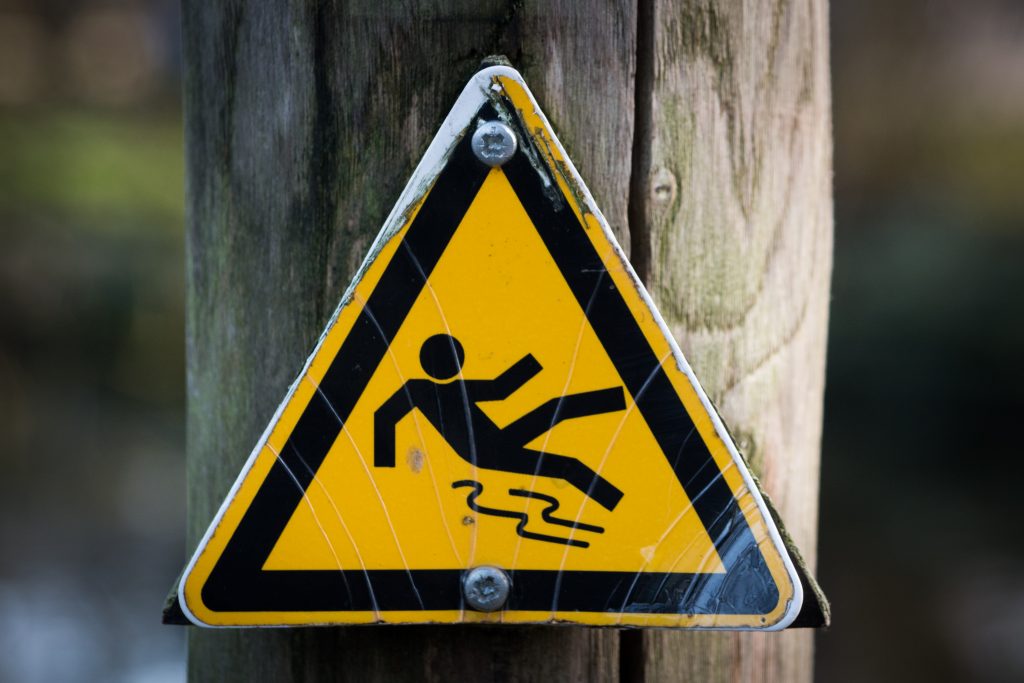 In the Parish of Plaquemines in Louisiana, the oyster business can be quite profitable. Anywhere in the state, land can be a method of maintaining a person’s livelihood, whether it be through oil, tourism, or even an oyster lease. When a person with valuable land passes away, especially if that person is your relative, you may be curious as to how the death will affect claims to the land and its profits. One family found out when the courts were forced to interpret the law of community property as it relates to oyster leases.
In the Parish of Plaquemines in Louisiana, the oyster business can be quite profitable. Anywhere in the state, land can be a method of maintaining a person’s livelihood, whether it be through oil, tourism, or even an oyster lease. When a person with valuable land passes away, especially if that person is your relative, you may be curious as to how the death will affect claims to the land and its profits. One family found out when the courts were forced to interpret the law of community property as it relates to oyster leases.
Sometime in the 1960s, Antoinette Bernice Cognevich Barrois (“Bernice”) and her husband, Mancil Barrois (“Mancil”) executed oyster leases. Mancil died in 1975 and left Bernice all of his property in his will. Because Mancil had children outside of the marriage, some children could benefit from Mancil’s estate with no claim to Bernice’s estate. Bernice maintained the oyster leases, including renewing them, for six years after Mancil’s death. When Bernice died in 1981, the administrators of her estate continued to maintain and renew the oyster leases. Neither Mancil’s nor Bernice’s estates were ever closed after their deaths, and in 2014, the administrator of Bernice’s estate, Helen, received a damage award from the 2010 BP oil spill as it damaged the oyster lease property. Mancil’s estate then filed motions seeking to declare the oyster leases as community property and seeking some of the award money pursuant to this decision. Although there were multiple procedural complications with this case, the only issue the Appellate Court was concerned with was whether or not the oyster leases obtained during the marriage of Mancil and Bernice are community property under Louisiana law.
Generally, property acquired during the existence of a legal marriage is considered community property, unless there are special circumstances that make the property separate property belonging to only one spouse. La. C.C. art 2338. This includes any “natural and civil fruits” of all community property. The spouse arguing against community property requirements does have the ability to rebut this presumption. La. C.C. art. 2340. Crucial here is also the Louisiana statute barring a renewal or extension of existing oyster leases to be considered “‘new” leases. La. R.S. 56:426.
 Louisiana Personal Injury Lawyer Blog
Louisiana Personal Injury Lawyer Blog


 When someone is injured on the job, sorting out liability can be complex. It can be doubly so when a prisoner is temporarily released so he or she can work and is subsequently injured on a job that was approved by the prison system and the sheriff managing that prison, but completely run by a private party. In such a situation, it will take an excellent lawyer to sort out the liability issues and advise whether a lawsuit is worth bringing. So, who is liable for injuries on a work release program?
When someone is injured on the job, sorting out liability can be complex. It can be doubly so when a prisoner is temporarily released so he or she can work and is subsequently injured on a job that was approved by the prison system and the sheriff managing that prison, but completely run by a private party. In such a situation, it will take an excellent lawyer to sort out the liability issues and advise whether a lawsuit is worth bringing. So, who is liable for injuries on a work release program? This case drives home the important reality that sometimes the justice system punishes innocent people, but also shows that in the end true justice can prevail.
This case drives home the important reality that sometimes the justice system punishes innocent people, but also shows that in the end true justice can prevail. When you are injured or ill and need treatment, you turn to a hospital and put your trust in the doctors and healthcare providers at that hospital. Normally, healthcare providers are diligent and provide top-notch care, however, occasionally a hospital fails to live up to the trust given to them by the patient. When this occurs, the
When you are injured or ill and need treatment, you turn to a hospital and put your trust in the doctors and healthcare providers at that hospital. Normally, healthcare providers are diligent and provide top-notch care, however, occasionally a hospital fails to live up to the trust given to them by the patient. When this occurs, the  There is no shortage of frivolous lawsuits. As a result, courts have developed many different ways to nip these sorts of lawsuits in the bud. One way is by allowing defendants to file an exception of no cause action, which is essentially a request that asks the court to drop the plaintiff’s lawsuit because there is no factual support to justify the lawsuit. In the case below, the plaintiff truly believed she was wronged by her employer, but because the facts she provided in her lawsuit did not support a valid claim, her lawsuit was ultimately denied. So, how can you avoid your lawsuit being dismissed by no cause of action in Louisiana?
There is no shortage of frivolous lawsuits. As a result, courts have developed many different ways to nip these sorts of lawsuits in the bud. One way is by allowing defendants to file an exception of no cause action, which is essentially a request that asks the court to drop the plaintiff’s lawsuit because there is no factual support to justify the lawsuit. In the case below, the plaintiff truly believed she was wronged by her employer, but because the facts she provided in her lawsuit did not support a valid claim, her lawsuit was ultimately denied. So, how can you avoid your lawsuit being dismissed by no cause of action in Louisiana?  Witnesses can be critical to winning a personal injury lawsuit after an auto accident. Without an impartial third party to attest to what happened, the case can devolve into he said/she said situation. Even worse, when one party is mentally unable to recall the events of the incident, the outcome becomes even more uncertain. Some may be tempted to think their case becomes a slam dunk after that. With one party not even sure of the facts, the other side has to prevail, right?
Witnesses can be critical to winning a personal injury lawsuit after an auto accident. Without an impartial third party to attest to what happened, the case can devolve into he said/she said situation. Even worse, when one party is mentally unable to recall the events of the incident, the outcome becomes even more uncertain. Some may be tempted to think their case becomes a slam dunk after that. With one party not even sure of the facts, the other side has to prevail, right? Listening is the most important skill for an attorney. This is of paramount importance when following court orders. A lawyer must be careful in how his actions appear and the actions he takes when attempting to enter in a case, but what happens when a lawyer violates court orders?
Listening is the most important skill for an attorney. This is of paramount importance when following court orders. A lawyer must be careful in how his actions appear and the actions he takes when attempting to enter in a case, but what happens when a lawyer violates court orders? Walmart is buzzing with pedestrian traffic on a daily basis. Where crowds of people are gathered, accidents are sure to follow. Sometimes Walmart’s products are knocked off of shelves, children spill juice in the aisles, and liquid products can slip from a person’s grasp and splatter across the floor leaving a hazardous environment for anyone to slip and fall. Despite Walmart’s best efforts to keep the stores clean, accidents still happen. As a result, legal services may be needed. If that is the case, information about the parties involved is exchanged between the opposing counsels for a period of time known as discovery. Information may be gathered through depositions or a series of questions under sworn testimony out of court. Once sufficient time has been provided for discovery, a party may determine that there is no factual basis for the case to move forward. Because of this lack of material fact, the party may then make a motion for summary judgment. This motion, if granted, can result in a dismissal of the entire lawsuit. Our justice system, however, provides an appeal process for situations where these judgments were granted in error! So, what do you do when you have been blindsided by summary judgement?
Walmart is buzzing with pedestrian traffic on a daily basis. Where crowds of people are gathered, accidents are sure to follow. Sometimes Walmart’s products are knocked off of shelves, children spill juice in the aisles, and liquid products can slip from a person’s grasp and splatter across the floor leaving a hazardous environment for anyone to slip and fall. Despite Walmart’s best efforts to keep the stores clean, accidents still happen. As a result, legal services may be needed. If that is the case, information about the parties involved is exchanged between the opposing counsels for a period of time known as discovery. Information may be gathered through depositions or a series of questions under sworn testimony out of court. Once sufficient time has been provided for discovery, a party may determine that there is no factual basis for the case to move forward. Because of this lack of material fact, the party may then make a motion for summary judgment. This motion, if granted, can result in a dismissal of the entire lawsuit. Our justice system, however, provides an appeal process for situations where these judgments were granted in error! So, what do you do when you have been blindsided by summary judgement? When one is injured by an employee’s negligence, it is reasonable to expect an award of damages from the employer. When an injured party files a lawsuit, however, the plaintiff must prove that the one who caused his injuries was indeed an employee of the business. For most cases, this is very easy to prove. When there is a question of identity, though, the evidence available can make or break the lawsuit.
When one is injured by an employee’s negligence, it is reasonable to expect an award of damages from the employer. When an injured party files a lawsuit, however, the plaintiff must prove that the one who caused his injuries was indeed an employee of the business. For most cases, this is very easy to prove. When there is a question of identity, though, the evidence available can make or break the lawsuit.